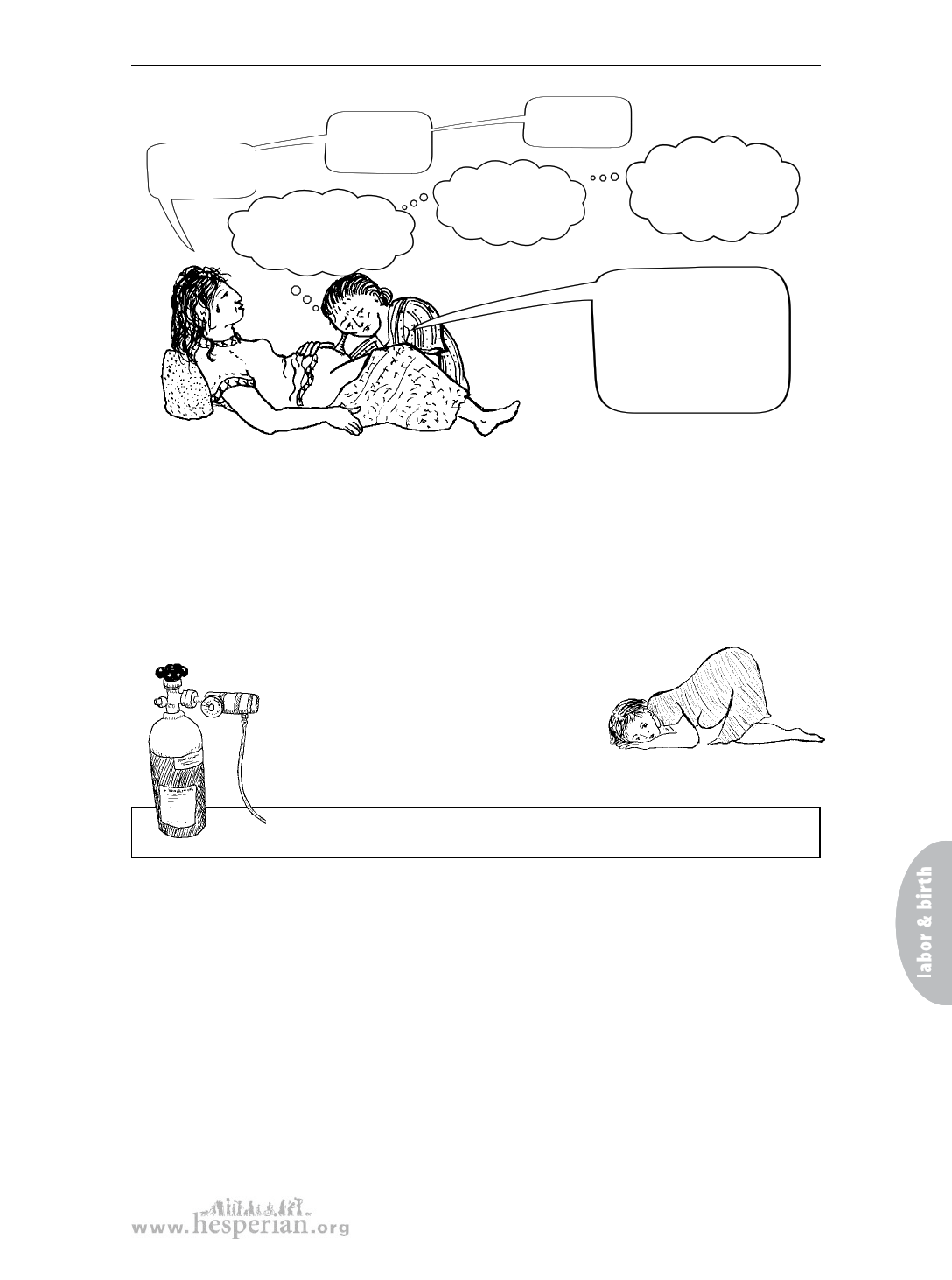
Signs for the midwife to check in stage 1
Contraction
is starting.
Oh! It is so
strong now!
Oh! Ah!
Baby’s heart is
normal — about twice
as fast as mine.
Aaah, now
it is over.
Now the heart
has slowed
down a lot.
Mmm…Baby’s
heart is still slow.
That may be a
danger sign.
Your baby’s heart
stayed slow for a while
after the contraction.
I’d like to listen to the
next few contractions
to see if this
happens again.
If the baby’s heartbeat is slower than 100 beats a minute and stays slow until
the next contraction or almost to the next contraction, the baby is in danger. This
is especially true if there are other warning signs, like green waters or a long labor.
The baby could be very weak at birth or have brain damage.
You must think about how far you are from a medical center and decide how
soon you think the mother will give birth. If the birth is near and the mother is
ready to push, it may be better to stay home and deliver the baby quickly.
Otherwise, take the mother to a medical center
for help. Have her get in the knee-chest
position, with her head on the floor
and her hips up. This can help bring
more blood and oxygen to the baby.
If you can, it may help to give the mother oxygen.
• give 6 liters (L) oxygen each minute
Fast baby heartbeat — faster than 180 beats a minute
These things can make the baby’s heartbeat speed up to more than 180 beats a minute:
• The mother is dehydrated
(see page 159).
• The mother has been in labor for
too long (see page 186).
• The mother or baby has an infection
(see page 179).
• The mother’s womb is tearing
(see page 184).
• The mother is bleeding
(see page 183).
If the baby’s heartbeat stays fast for 20 minutes (or 5 contractions),
get medical help.
173
A Book for Midwives (2010)